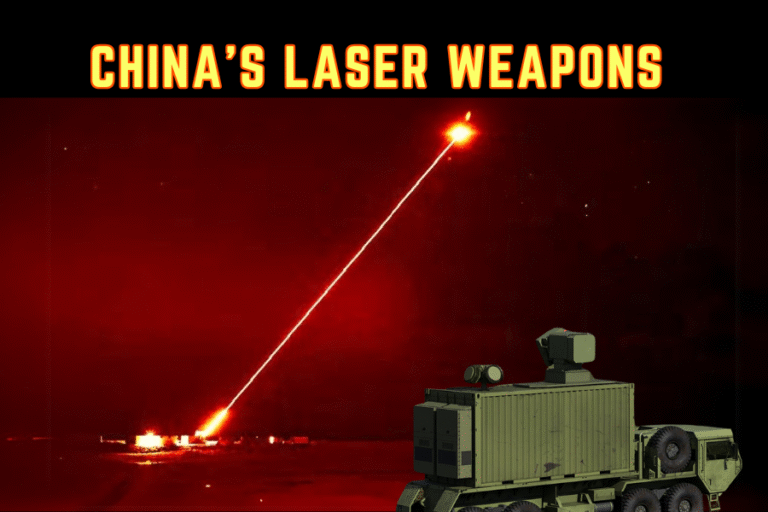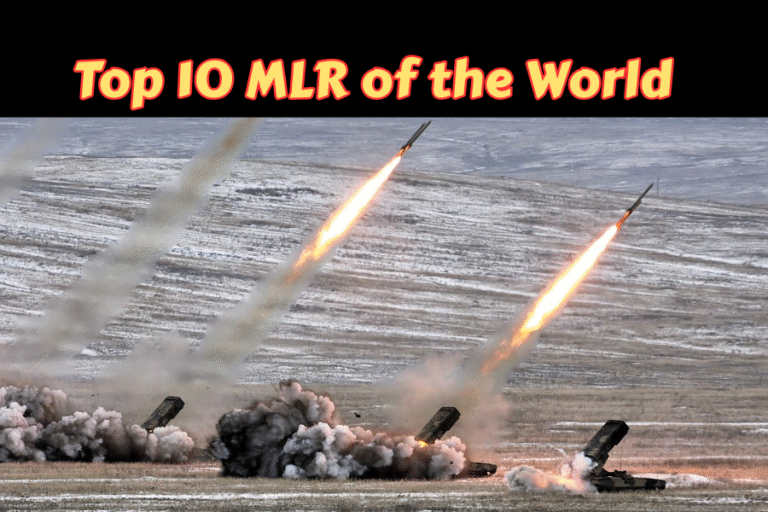(By Khalid Masood)
In the rapidly changing landscape of military operations, assault rifles serve as cornerstone weapons for infantry forces. These firearms deliver versatile firepower for engagements at medium ranges. Moreover, they must function reliably in diverse settings, from dense urban areas to harsh deserts. As we explore 2025, the top 10 assault rifles reflect a blend of innovation and tradition. For instance, modular designs allow soldiers to attach optics or suppressors quickly. Additionally, armies prioritize rifles balancing lethality, weight, and durability. However, some older models remain dominant due to their combat-proven reliability. This article details each rifle’s history, specifications, users, strengths, and weaknesses, based on defense analyses. Furthermore, it addresses queries like “what are the best assault rifles for armies?” or “which rifles are standard in 2025?” Drawing from recent military reports, we ensure comprehensive insights. Therefore, readers gain a clear understanding of these critical tools.
Assault rifles typically fire intermediate cartridges for controlled bursts. They feature select-fire modes, including semi-automatic and full-auto options. Additionally, detachable magazines enable rapid reloads in combat scenarios. According to data, over 100 million AK variants circulate globally, highlighting their prevalence. Meanwhile, Western forces favor 5.56mm rounds for lighter ammunition loads. However, new calibers like 6.8mm address modern armor threats. Consequently, the top 10 assault rifles showcase both legacy and cutting-edge designs. Armies across NATO, Russia, and Asia rely on them for missions. For example, special operations units prefer adaptable platforms for flexibility. Overall, these rifles shape infantry tactics. As conflicts evolve, reliability remains paramount. Thus, this list highlights battle-tested models leading the field.
10. AK-47: The Iconic Global Workhorse
The AK-47, designed by Mikhail Kalashnikov in 1945, remains a legend in military history. Soviet trials began in 1947, with adoption in 1949. Moreover, its design influenced countless firearms worldwide. Over 100 million units exist, reflecting its massive production. Additionally, its simplicity ensures functionality in extreme conditions. This rifle defines reliability for armies globally.
Specifications include a 7.62×39mm caliber for strong stopping power. It weighs 3.47 kilograms without a magazine. The overall length measures 880 millimeters. Furthermore, it uses 30-round detachable magazines. The action employs a gas-operated long-stroke piston with a rotating bolt. These features ensure operation in mud or sand.
Countless armies, from Russia to African nations, issue the AK-47. Former Soviet states maintain large stocks. Additionally, insurgents favor it for availability. However, some forces upgrade to newer variants like the AK-74.
Pros include unmatched durability in harsh environments. It’s affordable and easy to maintain with minimal tools. Moreover, its magazines resist damage under stress. Cons involve limited accuracy beyond 300 meters. Loose parts may affect performance over time. Despite this, its legacy endures.
In global conflicts, the AK-47 performs reliably. Soldiers train quickly due to its intuitive design. Furthermore, variants incorporate modern rails. However, precision lags behind newer rifles. Overall, it remains the ultimate survivor in the top 10 assault rifles.
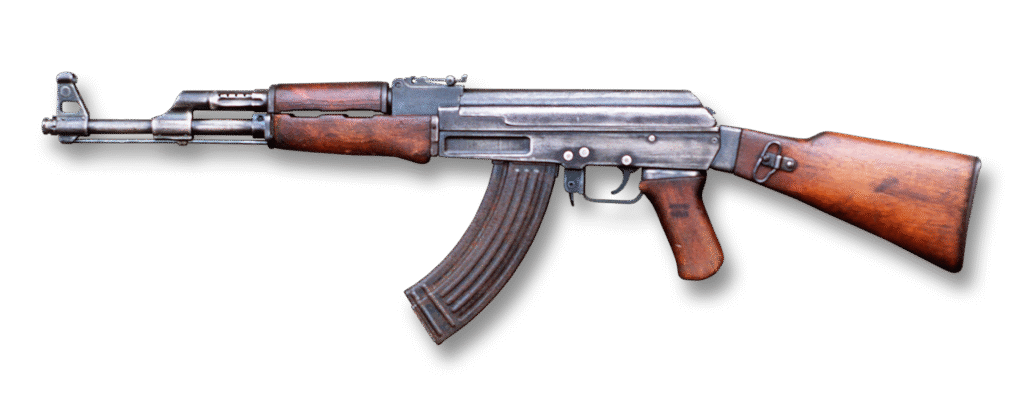
9. M4 Carbine: The Versatile U.S. Staple
Developed in the 1980s from the M16A2, the M4 Carbine offers compact versatility. Colt introduced it for U.S. forces, with adoption in 1994. Moreover, over 90 modifications have enhanced its performance. It saw action in Kosovo by 1999. Additionally, its widespread use defines modern U.S. infantry tactics. This carbine excels in diverse combat roles.
Specs feature a 5.56×45mm NATO caliber for lightweight ammo. It weighs 6.43 pounds unloaded. The length reaches 33 inches with the stock extended. Furthermore, it uses 30-round STANAG magazines. The action is gas-operated with a rotating bolt. These allow easy customization with accessories.
The U.S. Army and Marines issue it broadly. Over 60 countries adopt variants. Moreover, special forces like the UK SAS use it. However, the M7 is beginning to replace it in some units.
Pros include a lightweight frame for mobility. Its modular design supports rails for optics. Additionally, user satisfaction rates reach 89 percent. Cons involve jams in dusty conditions if unmaintained. The effective range shortens compared to full rifles. Despite this, it remains iconic.
In Iraq and Afghanistan, the M4 proved adaptable. Soldiers attach lights or lasers easily. Furthermore, suppressors enhance stealth capabilities. However, maintenance is critical. Overall, it ranks high among the top 10 assault rifles.
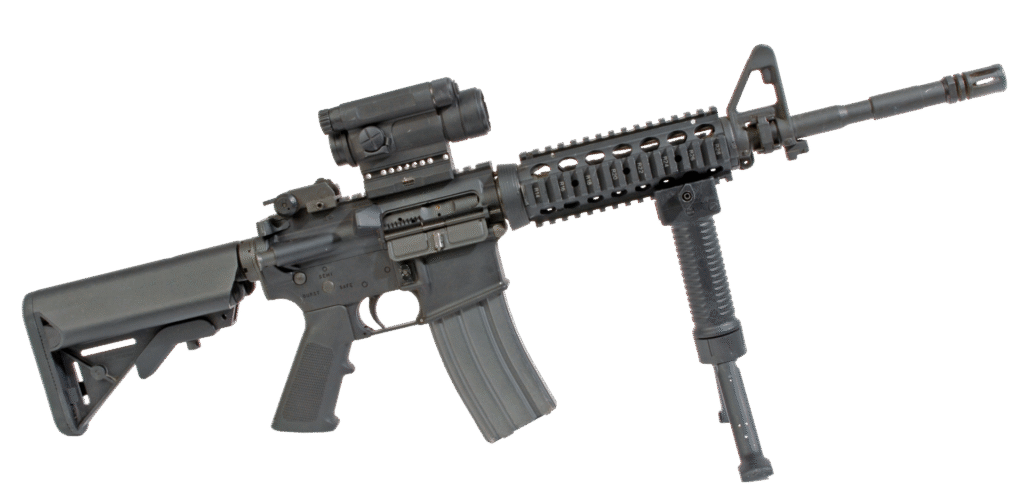
8. AK-74: The Lightweight Soviet Successor
Introduced in 1974 by Kalashnikov, the AK-74 improved upon the AKM. It entered service during the Soviet-Afghan War in 1979. Moreover, the AK-74M variant appeared in 1991 with upgrades. Licensed production occurred in countries like Bulgaria. Additionally, its lighter caliber enhances control. This rifle remains a staple in Eastern forces.
Specifications include a 5.45×39mm caliber for reduced recoil. It weighs 3.07 kilograms unloaded. The length measures 943 millimeters. Furthermore, it uses 30-round detachable magazines. The action is gas-operated with a long-stroke piston. These ensure reliability across conditions.
Former Soviet nations like Ukraine and Belarus use it widely. Russia fields it alongside the AK-12. Moreover, Eastern European armies retain large stocks. However, some transition to NATO-standard calibers.
Pros feature improved accuracy over the AKM. Its lightweight design allows more ammo carry. Additionally, it performs well in mud or snow. Cons include outdated ergonomics compared to Western rifles. The balance feels off for some users. Despite this, it’s battle-proven.
In Ukraine’s ongoing conflict, the AK-74 serves both sides. Soldiers value its simplicity for rapid training. Furthermore, aftermarket upgrades add rails. However, it lags in precision. Overall, it secures a spot in the top 10 assault rifles.
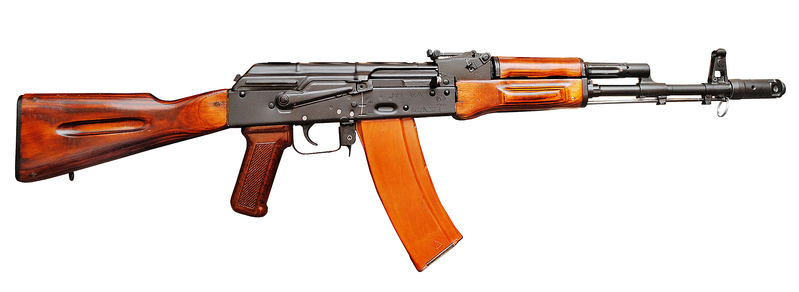
7. Heckler & Koch HK416: The Elite Forces Enhancer
The HK416 emerged in the 1990s from Heckler & Koch for U.S. Delta Force. It improves the M4 platform with enhanced reliability. Moreover, France ordered 94,000 units by 2025 for standard issue. Adoption spread to elite units globally. Additionally, its design reduces fouling effectively. This rifle excels in demanding operations.
Specs include a 5.56×45mm NATO caliber. It weighs about 3.5 kilograms. The length varies by barrel configuration. Furthermore, it uses STANAG magazines for compatibility. The action employs a short-stroke gas piston with a rotating bolt. These minimize malfunctions.
U.S. special forces like SEALs rely on it. Norway and Germany issue it as standard. Moreover, over 20 countries’ elite units use it. However, its adoption focuses on specialized roles.
Pros feature superior reliability in dirty environments. It’s highly accurate with M16-compatible accessories. Additionally, the piston system reduces carbon buildup. Cons include a higher cost than standard rifles. The weight exceeds some polymer models. Despite this, its prestige persists.
In maritime and desert operations, the HK416 performs exceptionally. Soldiers trust its consistent performance. Furthermore, training adapts to its mechanics. However, affordability limits broader use. Overall, it’s a top-tier choice in the top 10 assault rifles.
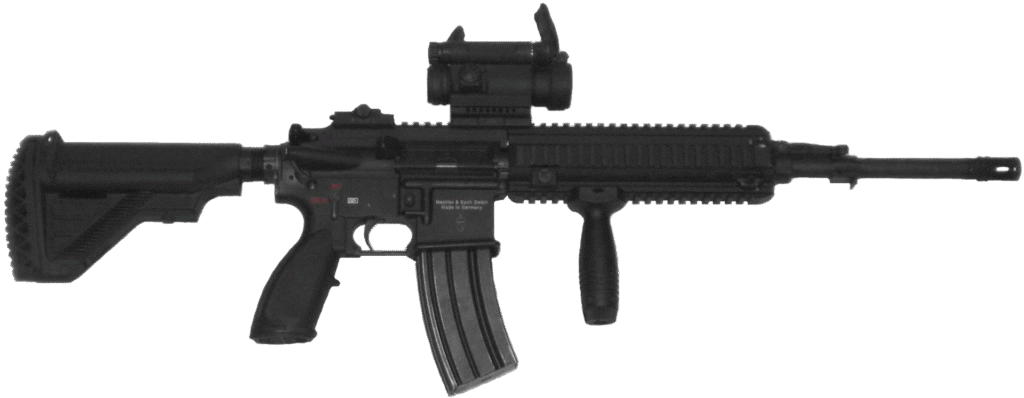
6. FN SCAR: The Modular Special Ops Choice
Developed in 2004 by FN Herstal, the FN SCAR family targets U.S. SOCOM needs. It won the SCAR competition, with issuance in 2009. Moreover, SOCOM retained the SCAR-H but phased out SCAR-L. Its high parts commonality aids maintenance. Additionally, it offers flexibility for special operations. This rifle suits elite missions.
Specifications include 5.56×45mm for SCAR-L and 7.62×51mm for SCAR-H. The SCAR-L weighs 3.29 kilograms. The length is 889 millimeters extended. Furthermore, it uses STANAG magazines for the L model. The action is a short-stroke gas piston with a rotating bolt. These ensure versatility.
U.S. SOCOM deploys it extensively. Belgium, France, Germany, and Japan use variants. Moreover, over 20 countries’ special forces adopt it. However, it’s less common in standard infantry.
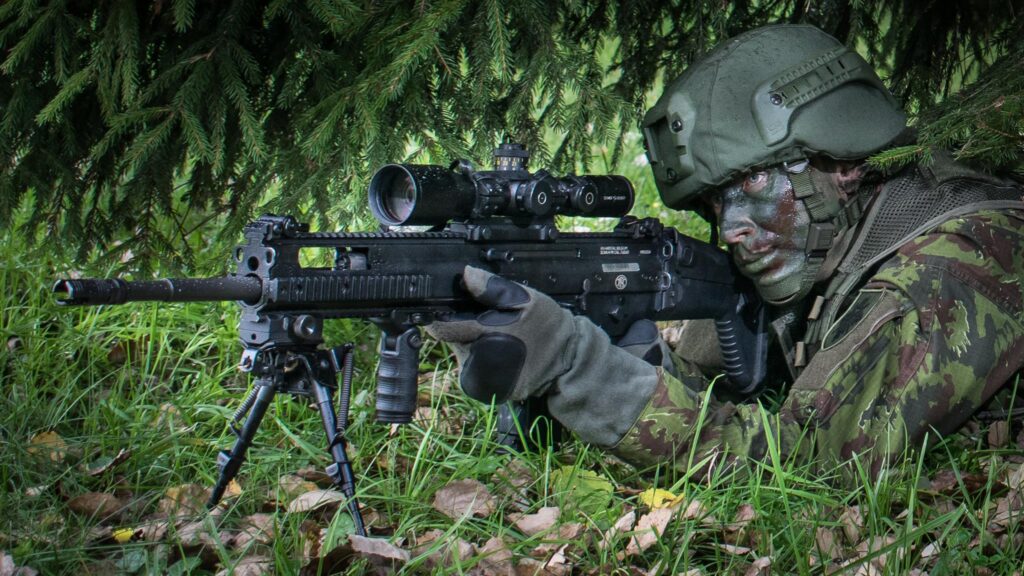
Pros include modular barrels for mission adaptability. It’s lightweight and accurate in combat. Additionally, special forces praise its reliability. Cons involve higher acquisition costs. Some configurations add weight. Despite this, it excels in flexibility.
In Afghanistan, the SCAR proved dependable. Soldiers customize it for specific roles. Furthermore, maintenance is straightforward. However, cost restricts mass adoption. Overall, it ranks strongly in the top 10 assault rifles.
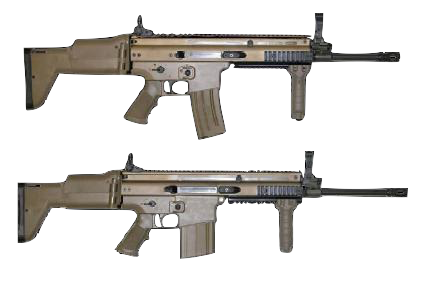
5. Steyr AUG: The Innovative Bullpup Pioneer
The Steyr AUG, designed in the 1960s by Steyr-Daimler-Puch, pioneered bullpup designs. Austria adopted it in 1977 as the StG 77. Moreover, it replaced older battle rifles across forces. Variants spread to dozens of countries. Additionally, its compact layout suits modern warfare. This rifle set a standard for bullpups.
Specs feature a 5.56×45mm NATO caliber. It weighs 3.6 kilograms with a standard barrel. The length measures 790 millimeters. Furthermore, it uses 30 or 42-round proprietary magazines. The action is gas-operated with a rotating bolt. These allow quick barrel swaps.
The Austrian Bundesheer issues it as standard. Australia fields the F88 variant. Moreover, Ireland and New Zealand use it. However, some nations explore replacements due to age.
Pros include modular setups for diverse roles. Integrated optics enhance aiming speed. Additionally, lightweight polymers improve mobility. Cons involve a mushy trigger feel. Tuning may be required for precision. Despite this, it remains versatile.
In counter-terrorism operations, the AUG excels. Soldiers value its compact size for vehicles. Furthermore, aftermarket support grows steadily. However, newer bullpups compete. Overall, it earns its place in the top 10 assault rifles.
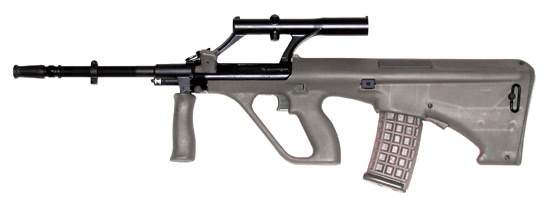
4. IWI Tavor X95: The Compact Bullpup Favorite
Israel Weapon Industries developed the Tavor X95 from 2003 to 2009. It entered Israeli service in 2009 for urban combat. Moreover, upgrades like longer barrels improved it by 2014. Israel began phasing it out for M4s in 2021. Additionally, its bullpup design maximizes barrel length. This rifle suits mechanized units.
Specifications include a 5.56×45mm NATO caliber, with .300 Blackout options. Weight ranges from 3.3 to 3.62 kilograms. Length varies from 580 to 714 millimeters. Furthermore, it uses STANAG magazines for compatibility. The action is a long-stroke gas piston with a rotating bolt. These ensure reliability in dust.
Israeli infantry uses it widely. Ukraine and India produce licensed versions. Moreover, Azerbaijan and Georgia issue it. However, reserves now hold many in Israel.
Pros feature a compact size for tight spaces. It offers longer range than AKM. Additionally, ambidextrous controls suit all users. Cons include unfamiliar handling for some. Bullpup ergonomics require training. Despite this, it’s effective.
In Gaza conflicts, the X95 performs well. Soldiers carry it easily in vehicles. Furthermore, it supports modern attachments. However, transitions to M4s occur. Overall, it ranks in the top 10 assault rifles.
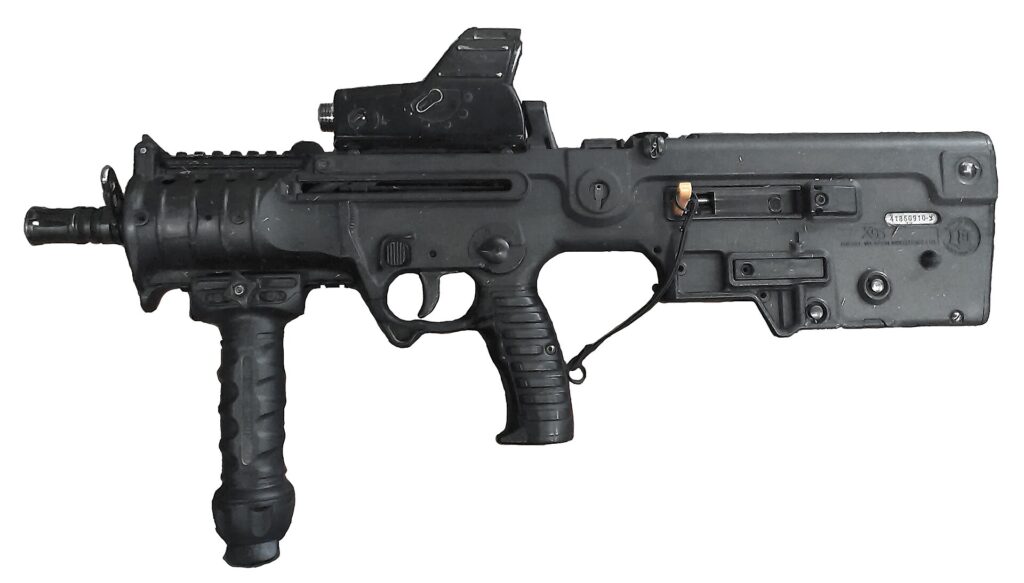
3. Heckler & Koch G36: The German Precision Tool
Introduced in 1997 by Heckler & Koch, the G36 serves the Bundeswehr. It replaced older rifles for German forces. Moreover, its lightweight polymer construction gained popularity. Exports reached multiple nations. Additionally, upgrades addressed overheating issues from early models. This rifle emphasizes accuracy in sustained fire.
Specs include a 5.56×45mm NATO caliber. It weighs about 3.63 kilograms. The length totals 999 millimeters with the stock extended. Furthermore, it uses 30-round detachable magazines. The action is a gas-operated short-stroke piston with a rotating bolt. These ensure consistent performance.
Germany issues it as standard. Spain and Latvia use variants. Moreover, special units in Mexico and Brazil employ it. However, some countries phase it out due to heat issues.
Pros feature excellent ergonomics for handling. It’s highly accurate at medium ranges. Additionally, the polymer frame reduces weight. Cons include barrel melting in prolonged fire. Reliability drops in extreme heat. Despite this, improvements maintain its reputation.
In peacekeeping missions, the G36 performs reliably. Soldiers praise its lightweight design. Furthermore, upgrades address early flaws. However, alternatives emerge for hot climates. Overall, it secures a spot in the top 10 assault rifles.
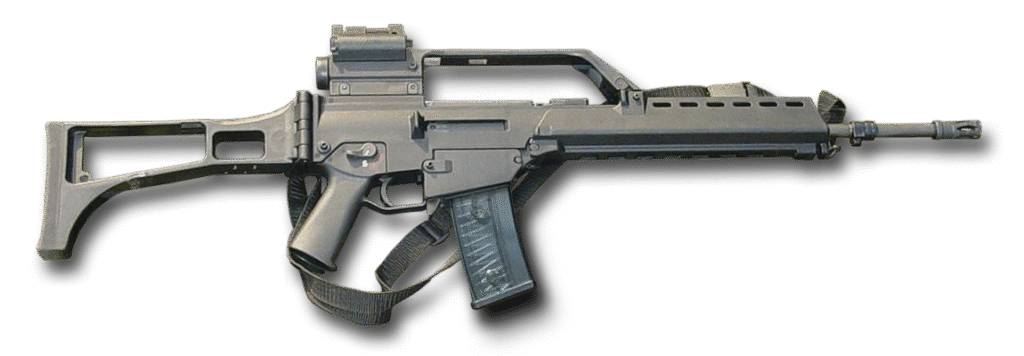
2. AK-12: The Modernized Russian Standard
The AK-12 emerged from the Ratnik program in 2011. Kalashnikov Concern designed it to upgrade soldier equipment. Moreover, prototypes evolved through 2015, leading to adoption in 2018. Serial production started that year for Russian forces. Additionally, combat feedback prompted changes like removing burst mode in 2023. This rifle builds on AK legacy while adding ergonomics.
Key specs feature a 5.45×39mm caliber for balanced performance. Weight is 3.5 kilograms empty. Length reaches 922 millimeters with stock extended. It uses 30-round magazines, compatible with older AK types. The action relies on gas-operated long-stroke piston and rotating bolt. These elements maintain traditional reliability.
Russian military adopted it to replace AK-74M. National Guard and special units also employ it. Furthermore, exports went to Armenia and Belarus. North Korea issued it to troops in 2024. However, Ukraine captured some during conflicts.
Pros include improved accuracy and modular rails for optics. It’s cost-effective and durable in harsh weather. Moreover, compatibility with existing ammo helps logistics. Cons involve issues with zero retention after cleaning. The selector switch may obstruct grips. Despite this, it suits modern warfare needs.
In Ukraine operations, the AK-12 proved versatile. Soldiers value its familiarity. However, refinements continue based on field use. Thus, it strengthens Russian infantry capabilities.

1. M7 Rifle: The Next-Generation U.S. Powerhouse
he M7 rifle marks a significant advancement in assault rifle design. Developed by SIG Sauer, it won the U.S. Army’s Next Generation Squad Weapon program in 2022. Moreover, it replaces the M4 carbine for close-combat units. Fielded starting in March 2024, it gained type classification as M7 in May 2025. Additionally, user tests began with the 101st Airborne Division in 2023. This rifle addresses modern body armor challenges effectively. Furthermore, its adoption signals a shift to more lethal calibers.
Specifications include a 6.8×51mm caliber for enhanced penetration. The weight stands at 8.38 pounds unloaded, rising to 9.84 pounds with suppressor. Overall length measures 36 inches including the suppressor. It uses a 20-round detachable box magazine, with optional 25-round versions. The action employs a short-stroke gas-operated piston and rotating bolt. These features ensure smooth operation in various conditions.
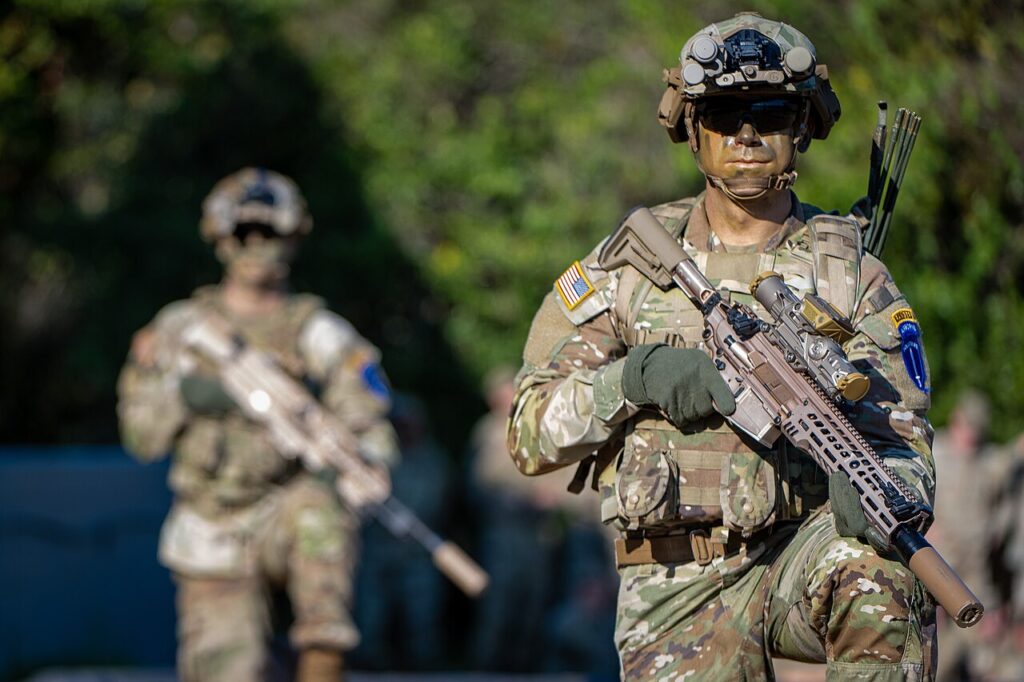
The U.S. Army primarily uses the M7, with no plans for non-combat roles. Units like the 75th Ranger Regiment received it for evaluations. Additionally, the contract covers potential Marine Corps inclusion. However, full deployment focuses on infantry brigades.
Pros feature superior range and accuracy against armored targets. The modular handguard allows easy accessory attachments. Moreover, it performs well in extreme environments. Cons include heavier weight compared to the M4, at about two pounds more. Ammo loads weigh more, reducing carried rounds by 70. Despite this, its lethality justifies the trade-offs.
In combat scenarios, the M7 excels in urban fights. Soldiers appreciate its stopping power. However, training adapts to the increased recoil. Overall, it represents future trends in assault rifles.
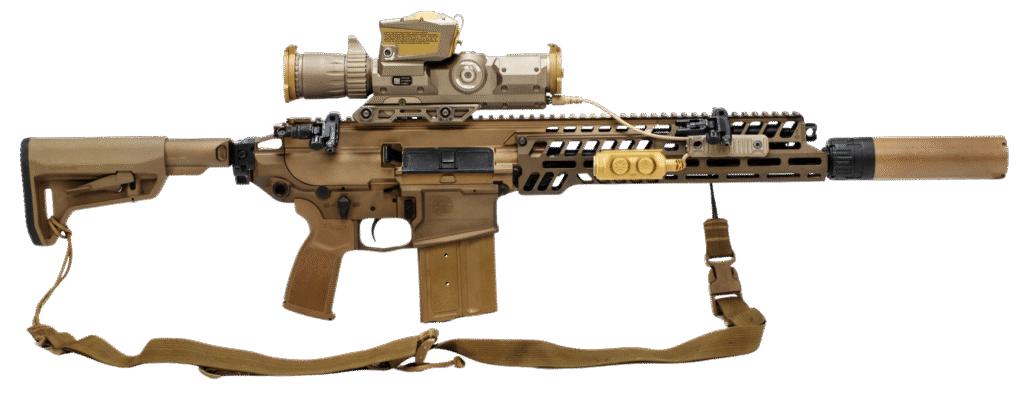
Conclusion: The Legacy and Future of Top 10 Assault Rifles
From the enduring AK-47 to the innovative M7, these top 10 assault rifles highlight military evolution. In 2025, modularity and advanced calibers shape modern selections. Moreover, rifles like the AK-12 show ongoing improvements. However, classics maintain relevance for reliability. Therefore, understanding the top 10 assault rifles reveals global defense strategies.






